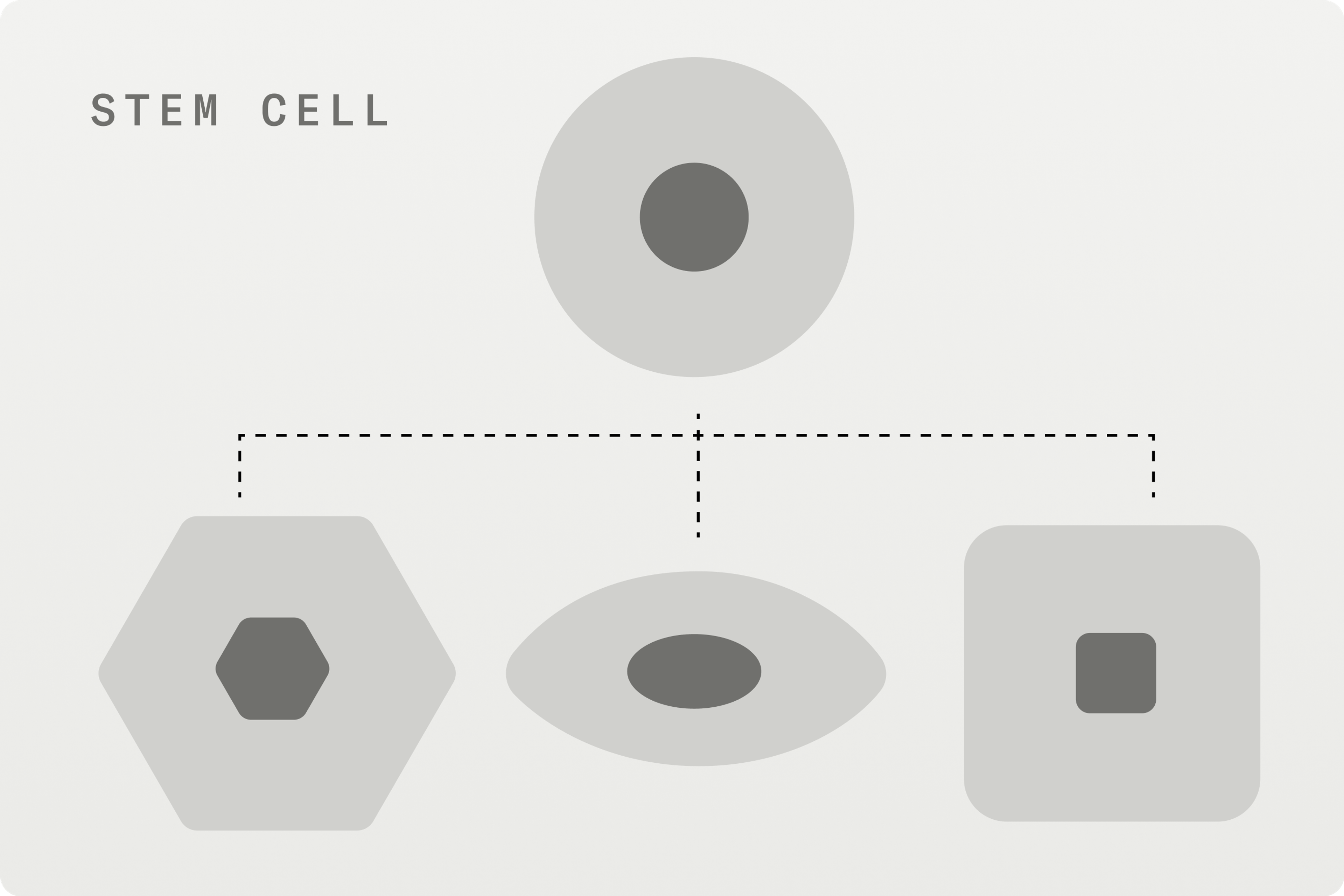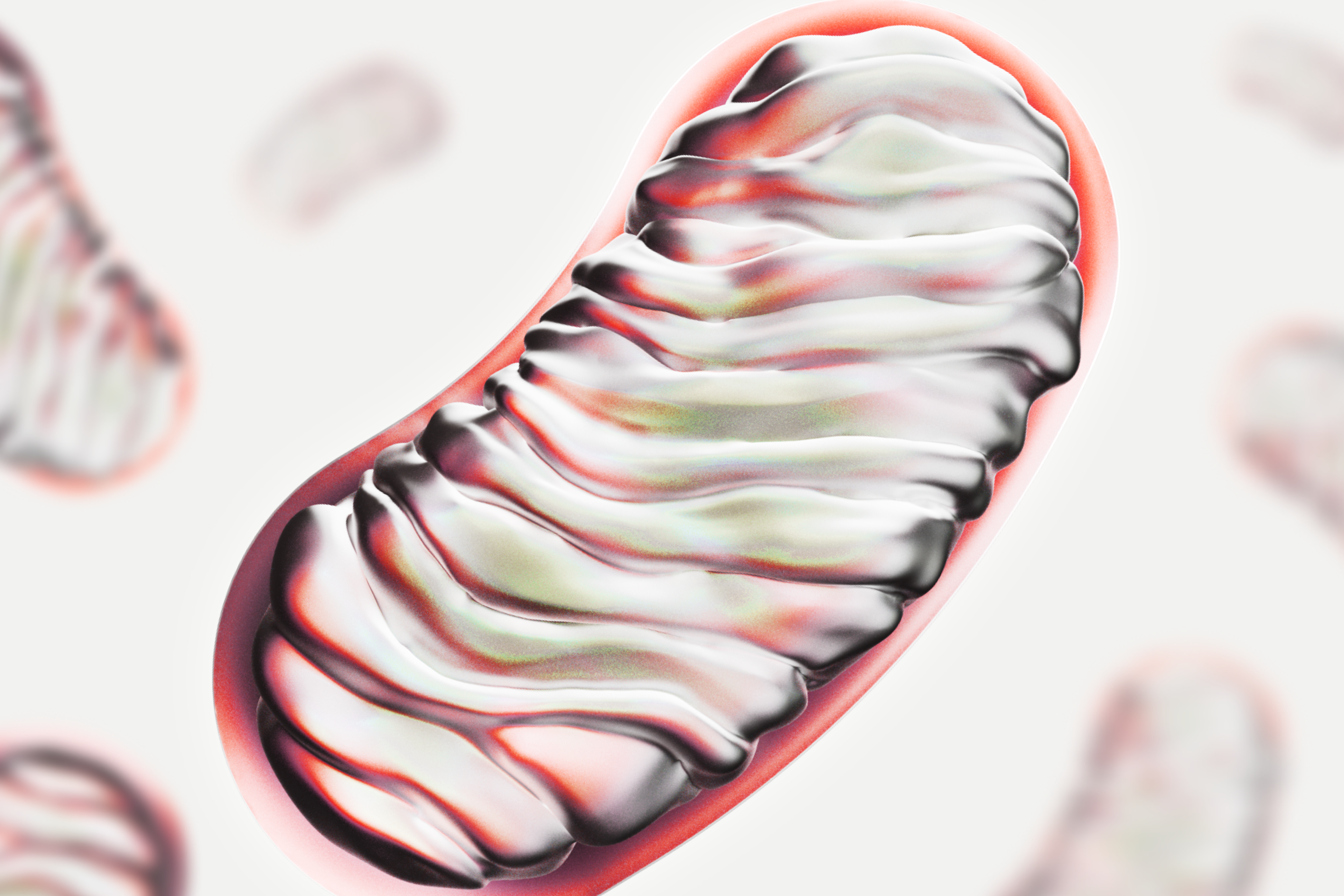Stem cells and longevity: unlocking the secrets of aging
Stem cells and longevity: unlocking the secrets of aging to enhance healthspan and promote vitality in our later years.

November 09, 2024
7 min read
As scientists continue to unlock the secrets of healthy aging, one fascinating area of research focuses on stem cells and their potential role in longevity. These powerful cells, which help regenerate and repair tissues, could hold the key to promoting a healthier and longer life. Stem cell exhaustion is one of the biological hallmarks of aging. A better understanding of how these cells function and decline helps researchers develop strategies that might slow the aging process and promote long-term vitality. In this blog, we'll dive into the intriguing role stem cells play in longevity and how they might shape the future of healthy aging.

What are stem cells?
Stem cells are technically unspecified cells that are able to both self-renew and differentiate into specialized cell types depending on signals from their environment.[3] Adult stem cells (or tissue-specific stem cells) are found in various tissues in the body, including muscle, intestine, and skin, and these cells can replace injured and aged cells through a process of self-renewal.[2] Research has aimed to understand how stem cells maintain tissue health, why they decline with age, and how they can regenerate to promote healthy aging. Factors in the environment and epigenetic changes have been part of the research in this area.[1]
Stem cells and mitochondrial dysfunction
The mitochondria are known as the “powerhouse” of the cell and support cell survival and division. They have also been found to play a role in stem cell function.[4] The decline in stem cell function with age is linked to mitochondrial dysfunction, making the mitochondria a potentially important target when promoting healthy aging. Research has demonstrated that in aged stem cells, there is a decline in energy metabolism. DNA damage and an excess of reactive oxygen species (ROS) contribute to mitochondrial dysfunction and the decline in cell function. Improving mitochondrial function may be one way to rejuvenate these cells.[5]
Aging and impaired autophagy
In addition to mitochondrial dysfunction, aging may also result in an impairment in processes that are crucial for health, such as autophagy. This process involves the breakdown and recycling of old or damaged parts of the cell and is an important part of cellular homeostasis.[6][𝑛] A reduction in autophagy has been found in aged stem cells, which is related to less ability of the cells to replicate. The process of autophagy in stem cells is critically important for cell health. Take muscle cells, for example. Muscle stem cells have been found to perform continuous autophagy as a way of maintaining quality control of the cells. This declines during aging, resulting in the accumulation of waste products and an impairment in the ability of the cells to divide. Maintaining the process of autophagy in stem cells may have implications for muscle functioning with age.[7]
Stem cells for longevity
Stem cell health is increasingly recognized as crucial for longevity, as "stem cell exhaustion" has become a hallmark of aging. Researchers are exploring interventions to slow, halt, or even reverse aging by preserving or rejuvenating stem cell function.[8]
Due to their unique ability to self-renew and differentiate, stem cells play a foundational role in regenerative medicine[9], with applications being studied for a variety of age-related conditions. For example, stem cell therapies are under investigation for neurodegenerative diseases like Parkinson’s, where they may help repair damaged neurons and restore function.[10]
One of the most promising applications of stem cells is in treating osteoarthritis. While the FDA has yet to approve stem cell therapy as an official treatment for this painful and often disabling condition, ongoing research shows encouraging results. Many patients are now turning to stem cell treatments as an option, although these therapies are generally not covered by insurance.[11]
Certain types of stem cells have unique characteristics that make them particularly suited for addressing aging. Some are less likely to trigger immune responses, are widely available from various donors, and can be harvested easily without causing harm or ethical concerns. These attributes make such stem cells promising candidates for therapies aimed at supporting health and vitality as we age.[12]
An example of stem cell treatment with established applications is bone marrow transplantation, where healthy stem cells are administered to patients with compromised or depleted bone marrow. This procedure can restore bone marrow function and may even contribute to the destruction of tumor cells in cancer patients.[13]
Ongoing stem cell research
Many different types of stem cells have been used in anti-aging research, with various beneficial effects. Studies have shown improvements in ovarian function, reconstruction of skin, lower blood glucose levels, and improved quality of life in some participants. Stem cell therapies are projected to progress to practical applications to counteract aging with advancing research.[14]
While stem cells show great potential in supporting health and longevity, significant challenges remain. A deeper understanding of stem cell behavior is needed to mitigate risks associated with these treatments, such as immune rejection and cellular death. Ethical and legal considerations also come into play, especially regarding the sources of certain types of stem cells. As research advances, careful regulation and oversight are essential to ensure the safe and ethical application of stem cell therapies for aging and other health concerns.
Moving forward
Stem cells, with their remarkable ability to differentiate into various cell types, hold significant potential for addressing the effects of aging. They offer promise for combating cellular changes linked to aging, including declines in mitochondrial function and autophagy, both of which are vital for cell renewal and energy production. However, more research is needed to fully understand and harness the benefits of stem cells in promoting healthy aging and longevity.
References
- ↑
Goodell MA, Rando TA. Stem cells and healthy aging. Science. 2015 Dec 4;350(6265):1199-204. doi: 10.1126/science.aab3388. PMID: 26785478.
- ↑
Branco A, Moniz I, Ramalho-Santos J. Mitochondria as biological targets for stem cell and organismal senescence. Eur J Cell Biol. 2023 Jun;102(2):151289. doi: 10.1016/j.ejcb.2023.151289. Epub 2023 Jan 20. PMID: 36696809.
- ↑
Tian Z, Yu T, Liu J, Wang T, Higuchi A. Introduction to stem cells. Prog Mol Biol Transl Sci. 2023;199:3-32. doi: 10.1016/bs.pmbts.2023.02.012. Epub 2023 Mar 15. PMID: 37678976.
- ↑
Chakrabarty RP, Chandel NS. Mitochondria as Signaling Organelles Control Mammalian Stem Cell Fate. Cell Stem Cell. 2021 Mar 4;28(3):394-408. doi: 10.1016/j.stem.2021.02.011. PMID: 33667360; PMCID: PMC7944920
- ↑
Ahlqvist, K., Suomalainen, A., & Hämäläinen, R. (2015). Stem cells, mitochondria and aging. Biochimica et biophysica acta, 1847 11, 1380-6 . https://doi.org/10.1016/j.bbabio.2015.05.014.
- ↑
Wirawan E, Vanden Berghe T, Lippens S, Agostinis P, Vandenabeele P. Autophagy: for better or for worse. Cell Res. 2012 Jan;22(1):43-61. doi: 10.1038/cr.2011.152. Epub 2011 Sep 13. PMID: 21912435; PMCID: PMC3351915.
- ↑
García-Prat L, Martínez-Vicente M, Perdiguero E, Ortet L, Rodríguez-Ubreva J, Rebollo E, Ruiz-Bonilla V, Gutarra S, Ballestar E, Serrano AL, Sandri M, Muñoz-Cánoves P. Autophagy maintains stemness by preventing senescence. Nature. 2016 Jan 7;529(7584):37-42. doi: 10.1038/nature16187. PMID: 26738589.
- ↑
López-Otín C, Blasco MA, Partridge L, Serrano M, Kroemer G. Hallmarks of aging: An expanding universe. Cell. 2023 Jan 19;186(2):243-278. doi: 10.1016/j.cell.2022.11.001. Epub 2023 Jan 3. PMID: 36599349.
- ↑
Guo J, Huang X, Dou L, Yan M, Shen T, Tang W, Li J. Aging and aging-related diseases: from molecular mechanisms to interventions and treatments. Signal Transduct Target Ther. 2022 Dec 16;7(1):391. doi: 10.1038/s41392-022-01251-0. PMID: 36522308; PMCID: PMC9755275.
- ↑
Liu Z, Cheung HH. Stem Cell-Based Therapies for Parkinson Disease. Int J Mol Sci. 2020 Oct 29;21(21):8060. doi: 10.3390/ijms21218060. PMID: 33137927; PMCID: PMC7663462.
- ↑
"Stem Cell Guidance." Arthritis Foundation, www.arthritis.org/science/events-publications/stem-cell-guidance (https://www.google.com/url?q=http://www.arthritis.org/science/events-publications/stem-cell-guidance&sa=D&source=docs&ust=1731187731055925&usg=AOvVaw0fIxCpEgq_n9XOZPVJsrKl). Accessed 25 Oct. 2024.
- ↑
Chang L, Fan W, Pan X, Zhu X. Stem cells to reverse aging. Chin Med J (Engl). 2022 Apr 20;135(8):901-910. doi: 10.1097/CM9.0000000000001984. PMID: 35089883; PMCID: PMC9276428.
- ↑
Khaddour K, Hana CK, Mewawalla P. Hematopoietic Stem Cell Transplantation. 2023 May 6. In: StatPearls [Internet]. Treasure Island (FL): StatPearls Publishing; 2024 Jan–. PMID: 30725636.
- ↑
Chang L, Fan W, Pan X, Zhu X. Stem cells to reverse aging. Chin Med J (Engl). 2022 Apr 20;135(8):901-910. doi: 10.1097/CM9.0000000000001984. PMID: 35089883; PMCID: PMC9276428.
Authors
Jinan Banna, PhD, RD
Jen Scheinman, MS, RDN
Reviewed bu
Related articles
Cookies
We use cookies to design and continuously improve our site. By using the website you agree to the use of cookies. Please review our policy to learn about managing cookies.


